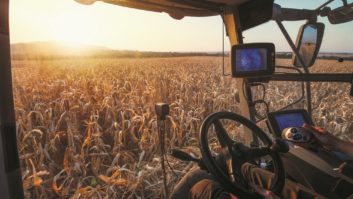The National Association of Broadcasters submitted comments this summer to the Federal Communications Commission as part of an FCC study of the reliability of communications networks during emergencies. Here are excerpts, as submitted by NAB executives Jane E. Mago, Jerianne Timmerman and Scott A. Goodwin.
The “one-to-many” broadcast architecture is more robust than the “one-to-one” broadband architecture for delivery of critical information during emergencies.
Because of the differences in their network architecture, even with additional reliability enhancements, wireless networks are simply not as durable as broadcasting during emergencies. The architecture of cellular network technology — a one-to-one, node-based structure — is ideally suited for interactive communications, but lacks robustness under heavy usage, which typically occurs in emergency situations. Broadcasting’s one-to-many architecture, in contrast, cannot be overwhelmed by increased usage.
When Hurricane Katrina made landfall on Aug. 29, 2005, cellular infrastructure in New Orleans was devastated. The few cellular towers that survived were overloaded by residents attempting to make phone calls. When phone networks failed and residents of New Orleans were cut off from the rest of the world, they “huddled around battery-operated devices, seeking comfort and news from the on-air voices.”
During the crisis that followed in the aftermath of Hurricane Katrina, several radio stations were able to continue broadcasting.While New Orleans was flooded and residents had no source of information or connection to the outside world, 15 radio broadcasters banded together and began transmitting news and information 24 hours a day from a station in Baton Rouge.
Similarly, in the hours and days following the recent devastating tornado in Joplin, Mo., “[t]elephone lines were down” and “[c]ell phones didn’t work.”In sharp contrast, local radio stations were able to continue broadcasting without interruption. Several radio stations began broadcasting emergency information 24 hours a day while simultaneously allowing residents to send out personal messages in search of loved ones.
The point-to-point architecture of wireless broadband networks essentially means that each user has his or her own path in the cellular network. This type of design allows two people standing next to each other using the same type of device and operating on the same wireless network to access totally different types of information. The first person can be watching a video and the second person can be looking up directions to the closest Chinese restaurant.
But, if those two people and hundreds or thousands of other people near them are trying to access the same information at the same time — like they may well during an emergency — the wireless network will quickly be overwhelmed. And, no amount of additional spectrum or other redundancy can overcome this issue.
Mobile device connections begin with a link between a user’s mobile device and a base station (often a cell tower).These base stations cover a certain geographic area and receive all data transmitted from mobile phones within that geographic area. The base station then transmits the data (in the wireless broadband context, this data is often a small packet requesting data be sent to the mobile phone) to a mobile switching center. The mobile switching center connects the data to a transmission network where the data is sent to its final destination. The data requested by the user is then sent through the same transmission network and back through the mobile switching center. From there, the data is sent to a base station that transmits the data to the individual’s mobile phone.
With this unicast design, a base station needs to send data to every mobile phone individually, even if those phones are accessing the same data (as they would during an emergency). This creates a serious risk of overloading the cell network when too many people attempt to access the network at the same time.
In contrast, television and radio broadcasting creates one or just a few data streams and transmits that data over a specific geographic area using a high-powered transmitter. This data can be received by anyone who has a receiver located within the transmission range of that broadcaster. Since there is no uplink or return path in the broadcasting model, no stress is put on broadcasting network. Therefore, a broadcaster’s data stream will continue, uninterrupted, regardless of how many individuals decide to view or listen to the broadcast.
Because of this ability to blanket “an unlimited number of users with the same information” simultaneously, without delays or “clogs,” it has even been observed that “homeland security depends on broadcast.”
We note that, theoretically, a cellular network provider could build a system capable of handling the increased cellular and broadband traffic that accompanies emergency situations. Building thousands of extra base stations, mobile switching centers and other excessive redundancies could be sufficient to handle extreme spikes in data requests.
However, it is simply not realistic, as a financial or practical matter.According to Heidi Flato, a spokesperson for Verizon Wireless in Northern California, it is not practical to build a cellular network for emergency situations. “To build for that sort of need, for that sort of circumstance, it’s like building a second [San Francisco] Bay Bridge just in case the first one falls down,” she said. Consequently, wireless services, including broadband, will likely remain a supplement to, and not a replacement for, broadcasting during emergencies.
NAB went on to recommend that the FCC support efforts to include broadcast chips in mobile phones; consider the impact of spectrum reallocations on the dissemination of information during emergencies; and support efforts to recognize broadcasters as “first informers” through programs like state and local credentialing, so that during emergencies, station staff can access their facilities and receive priority access to essential supplies like fuel.
Read the full comments including footnote references at tinyurl.com/rwnab2.












